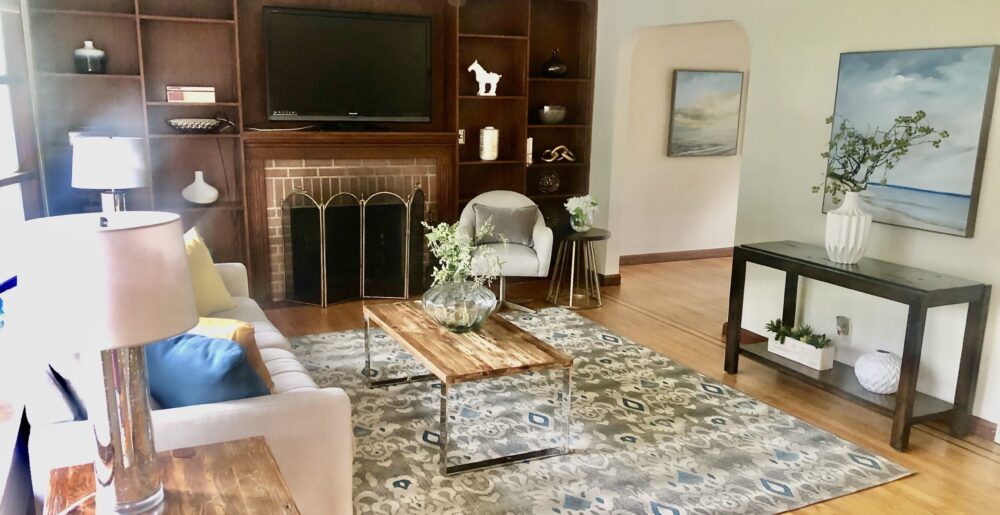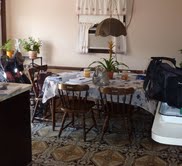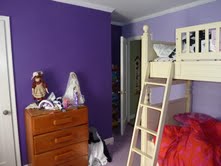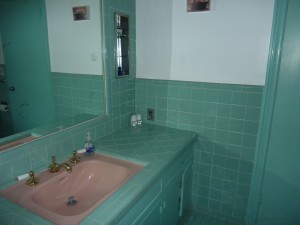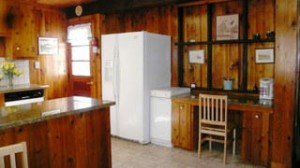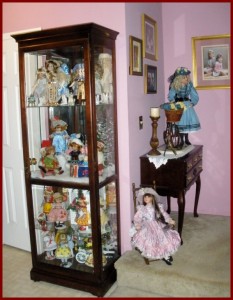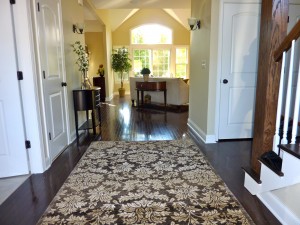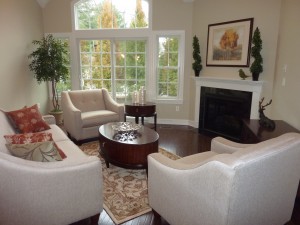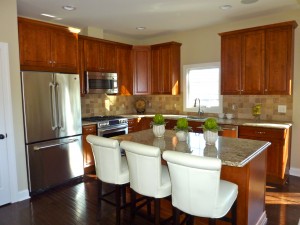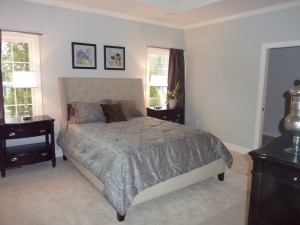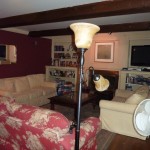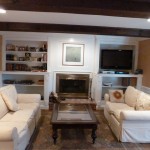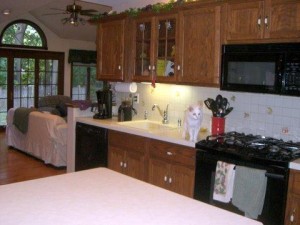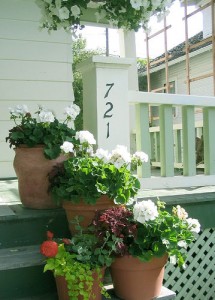 When you are preparing your house to sell, follow these 7 Simple Steps:
When you are preparing your house to sell, follow these 7 Simple Steps:
1) Clean it thoroughly or better yet, have it professionally cleaned. A clean home, just like a clean hotel room, is critical to impressing buyers! Don’t forget to clean carpeting and floors as well as around faucets and tile grout and around all light fixtures and window sills.
2) De-clutter your home of all knick-knacks, papers, toiletries, small items on floors — including shoes, baskets, dog beds, dog toys, fish tanks, excess items on countertops.
3) Remove excess furniture and/or re-arrange furniture to highlight the best features of your home (large windows and fireplaces, for one). Especially be sure not to block those selling features with furniture, treadmills, large lamps, etc.
4) Remove fussy, frilly, dark, floral drapes and valances or any other heavy window treatments. The only fabric window treatments that are in vogue these days when selling are simple to-the-floor lightweight panel drapes pushed to the sides of windows to let in as much light as possible.
5) De-personalize both your decor and your paint colors. Stagers know what colors are currently popular and neutral enough for buyers AND which ones will work best with your home’s finishes (floors, cabinetry, countertops, tile, and all the non-movable items). Eliminate themed decor, such as western, country, beach, tropical, southwest, etc.
6) Update light fixtures, hardware, bathroom fixtures, appliances where needed (stainless steel is still very popular in kitchens, and brushed nickel or chrome are still the leaders in bathroom faucets). If your competitors’ houses all have granite or marble countertops instead of formica or Corian, then yours should too!
7) Last but actually FIRST to buyers who drive by your home is to spruce up the curb appeal! Paint or clean the front door and trim as needed. Adding a new large door mat, new house numbers, mailbox and large pot(s) of either evergreens in winter in New Jersey or flowering annuals in the summer will attract buyers’ eyes and make a great first impression!
Tag Archives: home staging
Home Staging Creates Emotional Connection with Buyers
One of the main benefits of consulting with a home stager is the emotional connection she or he is able to create with buyers for your home. Buyers tend to buy with their hearts, not their heads, as much as they think they are using rational decision-making!
Many factors contribute to buyers’ perception of value when looking at a home:
Landscaping, paint colors, materials and finishes such as hardwood floors and granite countertops, fixtures such as stainless steel appliances, updated vanities, modern light fixtures, and even non-attached elements such as furniture and accessories. The vast majority of buyers who see older, overdone, mismatched, or even minimal décor will not find the home appealing and will de-value it or pass it by completely. There are many easy fixes that stagers can suggest to get offers for homes that are stagnating on the market because of older décor. Stagers can also psychologically “fix” poor lay-outs simply by re-arranging furniture and art.
Even dark or out-dated paint colors will reduce the value of a home, although having rooms repainted is an easy and relatively inexpensive fix. Unfortunately most buyers don’t know that and even if they do, they don’t want to deal with doing the work. Buyers will pay more money for move-in ready homes than out-dated ones or fixer-uppers (which is why investors seek the low-value, low-price homes that need work). Stagers advise their clients on the specific items that should be changed or replaced in their home in order to raise the value of the home over and above the expense involved!
Update and Repair Before Listing Your Home For Sale!
When listing an out-dated older home (anything older than about 10 years) for sale, you can’t expect that furniture re-arranging, de-cluttering, and cleaning are enough to prepare your home for the market. That’s like putting icing on a half-baked cake or lipstick on a pig! The underlying more critical problems and issues need to be addressed first, or the rest is not going to make much of a difference.
If your home has any of these problems, your investment in fixing or replacing and updating them will more than pay for itself in a higher market value when it’s time to sell:
1) Look down: Out-dated flooring, such as vinyl (even worse, strongly patterned vinyl), or chipped and damaged or stained ceramic or wood flooring. Buyers want clean, repaired or replaced ceramic or wood floors in kitchens and ceramic tile floors in bathrooms. Call a hardwood flooring specialist to fix, replace, or sand and refinish stained or scratched hardwood floors, which are a huge draw to buyers in the mid-Atlantic (and other) areas of the country.
2) Carpeting needs to be at the very least cleaned, if not replaced, depending on condition. If there are hardwood floors hidden underneath, rip out the carpeting and refinish the floors instead.
3) Look up: out-dated light fixtures – anything shiny brass, plastic, small-scale in a large ceiling, or older than about 8-10 years, tells buyers the home is older and makes them mentally downgrade their offer price.
4) Vanities and toilets and tubs in any color other than white or “biscuit” (off-white) are a negative when selling your home. Vanities and toilets are only a few hundred dollars to replace, plus labor, if you shop at the big-box stores in particular. Tubs can be re-glazed white for just a few hundred dollars as well.
5) Ceramic tile can also be painted or re-glazed inexpensively, so if yours is an old-fashioned color like pink, yellow, blue, or green, change it to white to look clean and universally appealing.
6) Wallpaper: Although wallpaper is starting to trend back in style in dining rooms and sometimes master bedrooms or children’s bedrooms, it is a highly personal décor taste, and I have yet to ever stage a home with trendy new wallpaper! All the wallpaper I see is decades old and holds no appeal to today’s buyer: it just screams “old”! So remove the wallpaper and paint an appropriate color.
7) Now that we’ve mentioned paint, be sure to avoid listing a home with any strong, bright, dark, dramatic colors. Painting is one of the cheapest ways to give your home a beautiful and modern face-lift and make it look clean and refreshed at the same time. Use neutrals that coordinate with the flooring and furniture finishes in your main living areas, and choose softer blue-grays, greens, yellows, gray, or beige for bedrooms, making sure the color you choose complements your new updated bedding! Most stagers have taken at least one, if not more, color classes, and are experts at color consulting so that the colors you choose will wow your buyers!
8) Out-dated kitchen cabinets and appliances: What color and style are your kitchen cabinets? If they have arches, they’re out-dated! If they are knotty pine, they’re out-dated, unless perhaps you live in a cabin in the woods or on a mountain. If they are bright red or orange or blue laminate, they probably won’t fly with buyers in any place other than trendy and modern NYC lofts. Darker stains are still a popular choice on the East Coast. Ivory, white, and gray cabinets are generally popular too, depending on the style of your home, its neighborhood, demographic, and the other finishes in your home. Black and sage green are less popular, but can work in some homes.
9) Wood paneling: PLEASE take your stager’s or decorator’s advice and eliminate your knotty pine or wood paneling, unless it’s teak or mahogany! Whether it’s faux wood or real wood, it is out of favor for many decades now unless it’s been painted white, off-white, or pale gray! Dark wood paneling screams “old” and “dated” and makes rooms dark as well. I can’t ever say it enough: light, bright rooms (that means leaving every light on during showings and all blinds pulled up and drapes removed or pulled completely aside) SELL houses! I went to an open house last weekend and the room was so dark with all the drapes drawn, I had to ask the seller to turn on the lights so I could see it!
10) Brass trim around showers, brass faucets, toilet levers, etc.: Eliminate the shiny brass trim that is a tell-tale sign of the 80s. If it’s too expensive to replace tub and shower trim, it can be dulled down or painted using specialty paints — at least a temporary fix to get more money when you sell. Ask your paint specialist or your stager for more info!
NOW your house is ready for the furniture re-arranging and trendy “icing on the cake” accessorizing that will prepare it for those close-up MLS photo shots that will woo buyers!
Taste-Specific Decor Scares Away Buyers!

 If you want to attract the most buyers possible when selling your home,
If you want to attract the most buyers possible when selling your home,
you need to present it to appeal to the masses by adopting at least some popular trends and eliminating taste-specific décor. In my 3-plus years of staging, I’ve come across some homes and seen countless photos on-line of many more that languish for many months or even years because they showcase out-dated colors, materials, finishes, or unusual décor, artwork, and collections that apparently no agent advised them to put away or change. About 95% of the time, homes have too much furniture that makes them look cluttered, cramped, or worn and tired! I find it hard to believe that any seller who truly wants to get top dollar for their home and move on would choose to waste months of time trying to sell a property that isn’t competitive in the marketplace.
Since many sellers don’t spend hundreds of hours a year keeping up with décor trends and they don’t have an eye for design, or know what sells, your best bet is to hire a stager to consult with you on how to present your home in order to market it effectively. Staging is a critical part of any home’s marketing plan, just like grooming yourself and dressing up in a conservative suit or dress is a part of a job interview in order to make a good first impression. A good stager will tell you much more than just what and how to de-clutter and what should be cleaned (OK, that’s easy, everything!). Stagers advise you on:
• What décor needs to be changed in order to capture many more prospects, 90% of whom troll the internet to decide on the homes they want to see: things like 1980s mauve and green carpeting, bright or out-dated paint colors, wallpaper, for instance, or bathroom fixtures and appliances in anything other than neutral colors, knotty pine paneling, old laminate kitchen cabinets, outdated lighting and hardware, Hollywood lightbulbs around bathroom mirrors (this is endemic in northern New Jersey, for some unknown reason), etc.
• How to enhance curb appeal, both for daytime and nighttime (think good lighting for pathways and the front door, even inexpensive uplighting for trees)
• Why and how much to pare down personal collections that will distract buyers from the selling features of your home and prevent them from seeing themselves living in it; I’ve seen gun collections, doll collections, old toy collections, deer heads on walls, stained glass “art” throughout a home, etc. These items are way too personal and can even be offensive to the vast majority of buyers.
• Eliminating family photos, pet paraphernalia, grandma’s crocheted afghans, doilies, etc. , and anything else that screams “this house is someone else’s home, I can’t see myself living here.”
• What repairs to make, if they are obvious to a critical eye: thinks like broken steps, doorknobs, missing tiles, mildewed grout, cracked walls or outdoor foundations, etc.
• What to stow away, such as garbage cans and personal hygiene items or cleaning supplies.
• What furniture should be removed, re-arranged, slipcovered to neutralize outdated patterns and colors or cover up stains, and generally positioned to maximize both space and your home’s selling features, such as fireplaces, views, nooks, etc.
• How to visually expand spaces by getting rid of scatter rugs, rugs that are too small for rooms, exposing hardwood floors, removing curtains, changing paint colors or adding mirrors in dark rooms.
• How, where, and what size artwork to hang to bring color and life into a room as well as to emphasize features
• And more . . . just too much to cover in this blog post!
The return on investment for staging is anywhere from 200% to 600%, according to HomeGain’s annual surveys on improvements that sell homes. I never make recommendations that won’t, in my experience, at least return their cost for that home’s location, and most improvements are inexpensive. Also keep in mind that buyers tend to over-estimate the cost of repairs, many don’t know who to turn to to get those improvements done, or don’t have the time to make those repairs and updates. They just know they want to live in homes like the ones they see on TV and in magazines, and sellers that give them what they are looking for are the ones who get more buyers and competitive bids and sell for higher prices!
Designing a Model Home
This week, I finished a model home project for an active adult community in Montville, NJ (Briar Hill at Montville). It was a lot of work from inception through staging day(s), but also fun. When designing for a model home, you need to consider the age and lifestyle needs of your target market (in this case, upscale 55 years old up to around 80 years old, but with the majority of buyers likely to be in their 60s); the geographic area (upper middle class country/suburban in northern NJ); and the timeframe for getting the project done (originally about 5-6 weeks, extended to 10 weeks because of construction delays). I added more luxury touches with layered bedding, decorative pillows, and panel drapes, as well as valances in the dining area (drapes would be too formal for this eat-in area, the only dining area of the home). I chose oriental and classic acorn/fleur-de-lis area rugs to convey a traditional, classic look, but I went with transitional mid-century furniture to avoid the stodgy, out-dated look seen in many older active adult communities. The curved tables in the hall and living room, as well as the rounded edges of the dining room table, give a sense of relaxation and softness appropriate to a retirement community.
I also selected many of the finishes in this home — the ebony stain on the floors, the oil-rubbed bronze light fixtures in the main living areas, the granite, carpeting, and paint colors. The goal was to convey elegance and relaxation.
Bad Reasons NOT to Stage!
I hear many of these reasons/excuses why sellers don’t want to spend $$ on staging.
None of them actually make good sense! Thanks to Janet Jones of just-your-style interiors in Maui, Hawaii for sharing!
10 REASONS NOT TO STAGE YOUR HOME
1. We want to test the market for 90 days. And on the 91st day? Price reduction–and 90 days worth of potential buyers who have already eliminated your property.
2. It costs too much money. I have never seen a home where the staging costs would have exceeded the first price reduction. And that doesn’t even factor in the monthly carrying cost of the home.
3. We can’t stage the house, we’re living in it. One common misconception is that staging is only for vacant homes. Every home/condo can be staged, and you can actually live in it after staging.
4. We didn’t have to stage any of the other properties we sold over the years. Yes, once upon a time you could generate three offers by 5 p.m. on the same day your Realtor put the For Sale sign in your yard. Not now. Buyers are picky and they have a lot of homes to choose from.
5. Everyone loves our house so buyers will love it, too. What you, your friends and relatives love about your house may not be what today’s buyer wants. Sellers are often baffled by the feedback they get after showings–amazed that buyers have found things they don’t like about the property.
6. We can clean the carpets and declutter without someone telling us how. Yes, you can (and should) do this, but it is a tiny piece of staging. Do you know what separates “clutter” from “asset”? And what about all the other things that staging encompasses, like traffic flows, highlighting architectural features, updating, and appealing to your target market?
7. We have no desire to remove/change our _______________ (wallpaper/mirrored tile/gold faucets/paneling/dated light fixtures . . .). And neither do buyers. Better to keep your home or be ready to sell at a deep discount.
8. The view alone will sell this place. Then why many months later are these great view homes/condos still on the market? Could it be that buyers want something to go with the view–like a comfortable, move-in ready home?
9. We would rather let the buyers makes their own paint/flooring choices. And that equals a price reduction. If buyers do make an offer on your home they will double or triple the cost of these items and reflect that in their discounted offer price–which includes a deduction for the inconvenience.
10. Our home is professionally decorated. A professionally decorated home is tailored to the owner’s particular needs. Does it work for the new buyer’s needs? You could see #1 above . . . .
These are all great reasons–
• for price reductions
• for extended time on the market
• for buyers not coming to look at your home
• for buyers not coming back for a second look
There are dozens of reasons not to stage, but only one good reason to stage–getting your home sold faster for the highest possible price. Staging is preparing your home for sale and creating a home that buyers want to buy. If you want to be in the best competitive position in this market today, consult with a professional home stager before listing your property for sale.
Wall Color Makes A Difference, Staging or Decorating!
In this home, just changing the color on the walls from dark red to light gold grasscloth wallpaper made a big difference! This room only has light on the northeast side from French doors into a sunroom, so the red made the room cozy but dark, especially considering the beamed ceiling. The homeowner also lightened and brightened this room with new recessed lights, and we will likely be adding 3 lamps (combo of table and floor) later. Now this room looks more sophisticated and would be more appealing to buyers as well.
Stage Before Listing!
A prospect asked me this week if staging before listing is better than the other way around — absolutely! There are at least 4 good reasons why:
1) Get your home looking its best before you invite the agents to tour your home and do their comparative market analysis (comps), and it is very likely they will come back with a higher listing price.
2)Agents will be more excited about listing and showing your home, because a well-presented home out-shines its competition and gets buyers excited about living there!
3) The photos your agent takes of your home will look much better once it is staged. For proof of this, take a look at random MLS photos of houses for sale in your area, and think about which houses YOU would want to see based on those photos. I’ve seen far too many terrible photos of rooms crowded with furniture, outdated wallpaper and paint colors, messy bathrooms and kitchen counters, rooms with the blinds and curtains closed, tons of family photos and toys scattered about, and unmade beds or tired-looking bedrooms that need that luxury “spa-like” touch to avoid turning off buyers. Between 80 and 90 percent of buyers look at MLS photos before contacting an agent, and if your home’s photos aren’t as beautiful as they could be, most buyers will move on to the next property without even asking to look at your home.
4) Stagers are the experts in knowing what to do; agents may know the bare-bone basics, but they aren’t going to spend hours “fixing” your home’s problems, and most don’t know just HOW to solve the problems anyway. Stagers have the design background or “eye” and a large inventory of accessories that will add the pizzazz most homes need — like jewelry adds the sparkle to an outfit — and we also can handle renting furniture for you when necessary.
5) Better late than never: If your home has already been on the market with no offers or only low-ball offers, it’s never too late to stage to renew interest and get those offers coming in! Remember, the cost of staging is always less than the cost of a price reduction!
Curb Appeal More Important in Buyers’ Market
With the 27.2% drop-off in home sales in July and an increase in inventory supply from 7.6 months in June to over 9 months in July, it has become even more critical for sellers to attract buyers through curb appeal. As we head into Fall, keep the lawn mowed, the leaves picked up, the shrubs trimmed — especially if they are blocking any windows — and make sure your house has been power-washed if it needs it. The walkways, steps, and front door should all be in excellent condition, with a fresh coat of paint if needed. A good safe color for the front door is a couple of shades darker than the shutters, or black or dark gray, or a medium-to-dark wood stain. (Works on fiberglass doors, too!)
Even little touches like a new welcome mat that says “Welcome,” new house numbers and mailbox, if your old ones are out-of-date or rusty, can make a big difference in the impression your home makes on buyers. Make sure your outside lights are all in good working order for any night-time appointments, and to make a great impression on potential buyers who spot your home’s For Sale sign at night, which starts to come earlier and earlier in the Fall.
A couple of pumpkins (if they’re real, make sure you replace as they start to rot!) or large pots of mums on the front steps will go a long way towards making your home look welcoming.
What DOESN’T belong in this picture . . . !
What a nicely staged home, EXCEPT for the cat walking on the kitchen countertops! Now, how did the photographer miss that?! Don’t get me wrong, I love cats, but a lot of people don’t, and even if they do, the thought of cat paw prints and cat hair floating around a kitchen isn’t exactly the appetizing thought to present to buyers “scoping” out your new listing on the MLS! Just wrote in my AR blog and website blog why “Animals and Showings Don’t Mix” and this is another one to add to the list, LOL.
